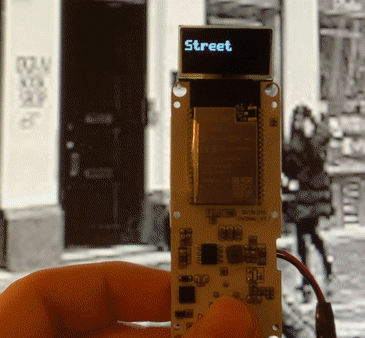Key Features • Usage • Details • Known Bugs
- SqueezeNet model with Fire layers
- Prunes model using tensorflow-model-optimization (tfmot)
- Quantizes model using tfmot
- Runs Huffman encoding using dahuffman Python module
- Deploys model to run on ESP32
$ python run.py
This will run the model training and compression pipeline. To modify the hyperparameters, note that there are the following variables you can set in run.py:
IMAGE_DIM = 150
NUM_CLASSES = 6
BATCH_SIZE = 32
NUM_EPOCHS = 10
IS_CALTECH = 0
This project contains a successfully implemented base model of SqueezeNet 1.1 using the Intel Image Classification dataset and Caltech 257 dataset as implemented preprocessing functions. It also contains functions for three added compression techniques: pruning, quantization, and huffman coding in three separate files that are manually made for our SqueezeNet implementation in many cases.
The run.py file instantiates a model based on set hyperparameters, which includes a choice for datasets from Intel to Caltech. Using a sequential Keras model, it instantiates a SqueezeNet model and trains it for the user set number of epochs and saves checkpoints as well. After, it runs our three optimizations and ultimately, the compressed model can be saved locally.
The baseline model implementation is contained in the two files model.py, fire_mod.py. model.py contains the SqueezeNet class which has the general architecture of the model, composed of convolution, FireLayers, maxpooling, and average pooling. It has the call function for training the model as well as prune utility functions to wrap and unwrap the individual layers in the model. The FireLayer is a tf.keras.Model that represents the FireLayer described in the paper, that has a squeeze layer and returns the output of the concatenation of two expand layers with different sized kernels. We need to use tf.keras.Model instead of as a layer because Keras can't examine layers within layers, so our implementation requires this sort of inheritance architecture. FireLayer also has pruning helper methods to prune its layers within, and is called by the pruning functions in the SqueezeNet class.
The three other files contain our compression implementations. pruning.py contains two helper methods, load_model and export_model to load in SqueezeNet weights that have been saved into a SqueezeNet model, and exporting a model into a zipped file locally. We then have a pruning method that prunes a SqueezeNet and creates a new SqueezeNet model with pruned weights.
quantization.py contains a pre_quantize method to make the model quantization aware, and retrain it, as well as a save_model and load_model utility function. A display_diff method is provided to compare the size of an original SqueezeNet model and our retrained quantized SqueezeNet model. There are also demo methods to see more quickly on an MNIST model to see if it works.
huffman_opt has three methods using the da_huffman library for encoding and decoding models. It provides an encoding size which doesn't include the codec size but shows how much compression can be used on this level and this representation of the weights.
Huffman encoding doesn't describe the size of the codec as of yet and we can find the value manually but it doesn't currently reflect that in the code. Also, full quantization doesn't work with our inheritance architecture of submodels of FireLayers in models so we have an implementation of it that does represent the compression that it provides, but it may affect the accuracy of the model after it has been quantized. Currently, our model does run on Caltech 257 but the dataset is unbalanced and has quite low training examples so training has been really unstable and not reliable enough to show as a final result. Thus, we are currently not supporting Caltech 257 and our results are based on Intel Image Classification.
